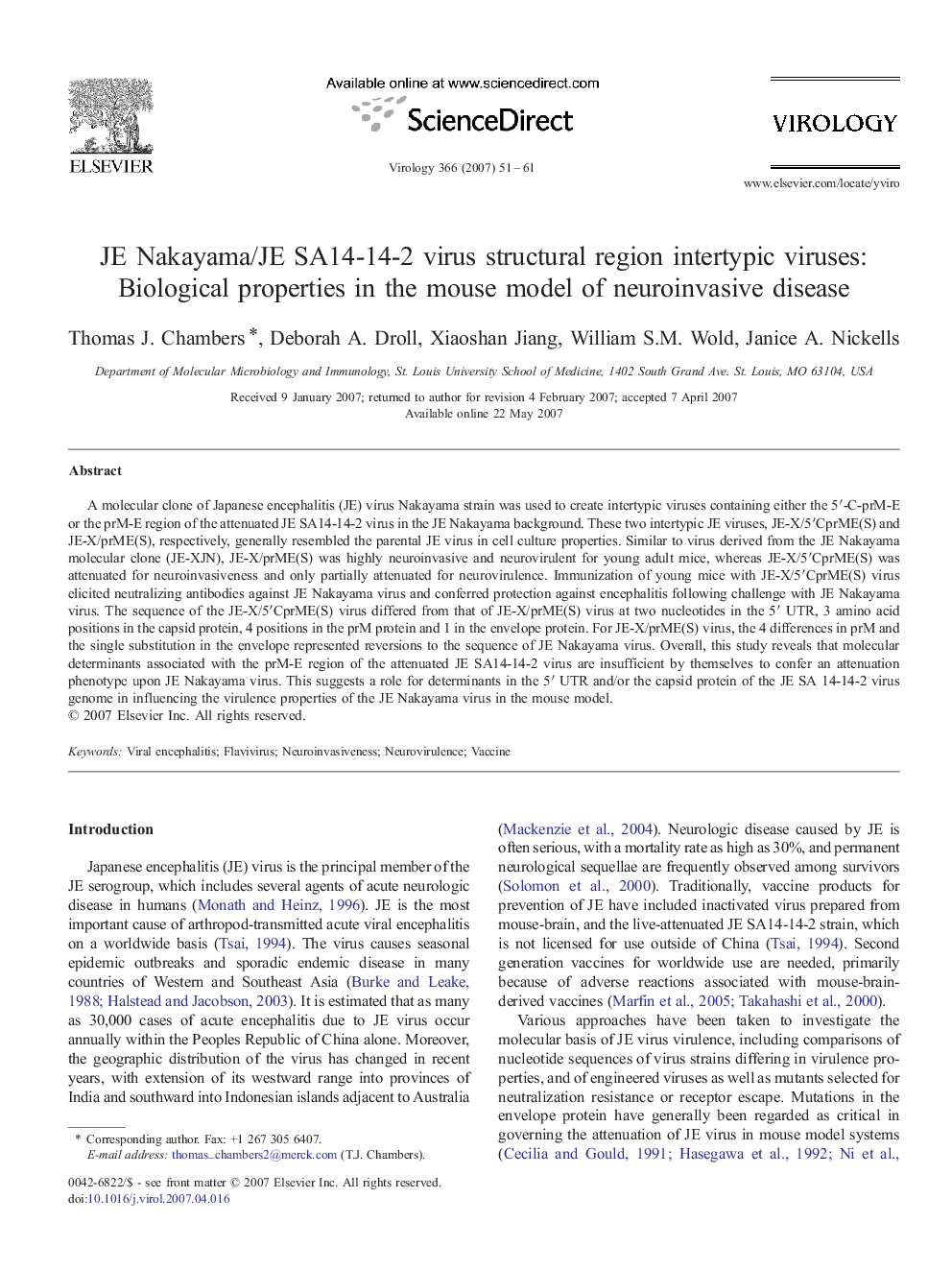| Article ID | Journal | Published Year | Pages | File Type |
|---|---|---|---|---|
| 3426094 | Virology | 2007 | 11 Pages |
A molecular clone of Japanese encephalitis (JE) virus Nakayama strain was used to create intertypic viruses containing either the 5′-C-prM-E or the prM-E region of the attenuated JE SA14-14-2 virus in the JE Nakayama background. These two intertypic JE viruses, JE-X/5′CprME(S) and JE-X/prME(S), respectively, generally resembled the parental JE virus in cell culture properties. Similar to virus derived from the JE Nakayama molecular clone (JE-XJN), JE-X/prME(S) was highly neuroinvasive and neurovirulent for young adult mice, whereas JE-X/5′CprME(S) was attenuated for neuroinvasiveness and only partially attenuated for neurovirulence. Immunization of young mice with JE-X/5′CprME(S) virus elicited neutralizing antibodies against JE Nakayama virus and conferred protection against encephalitis following challenge with JE Nakayama virus. The sequence of the JE-X/5′CprME(S) virus differed from that of JE-X/prME(S) virus at two nucleotides in the 5′ UTR, 3 amino acid positions in the capsid protein, 4 positions in the prM protein and 1 in the envelope protein. For JE-X/prME(S) virus, the 4 differences in prM and the single substitution in the envelope represented reversions to the sequence of JE Nakayama virus. Overall, this study reveals that molecular determinants associated with the prM-E region of the attenuated JE SA14-14-2 virus are insufficient by themselves to confer an attenuation phenotype upon JE Nakayama virus. This suggests a role for determinants in the 5′ UTR and/or the capsid protein of the JE SA 14-14-2 virus genome in influencing the virulence properties of the JE Nakayama virus in the mouse model.
